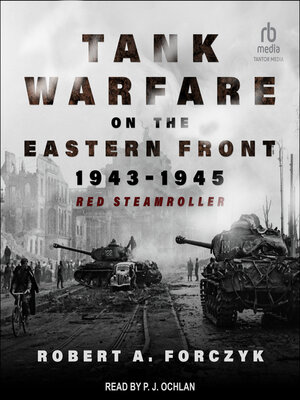Tank Warfare on the Eastern Front, 1943-1945
audiobook (Unabridged) ∣ Red Steamroller
By Robert A. Forczyk

Sign up to save your library
With an OverDrive account, you can save your favorite libraries for at-a-glance information about availability. Find out more about OverDrive accounts.
Find this title in Libby, the library reading app by OverDrive.



Search for a digital library with this title
Title found at these libraries:
| Library Name | Distance |
|---|---|
| Loading... |
The author of Case White offers an extensive history of German and Soviet armored warfare toward the end of World War II.
By 1943, after the catastrophic German defeat at Stalingrad, the Wehmacht's panzer armies gradually lost the initiative on the Eastern Front. The tide of the war had turned. Their combined arms technique, which had swept Soviet forces before it during 1941 and 1942, had lost its edge. Thereafter the war on the Eastern Front was dominated by tank-led offensives and, as Robert Forczyk shows, the Red Army's mechanized forces gained the upper hand, delivering a sequence of powerful blows that shattered one German defensive line after another.
His incisive study offers fresh insight into how the two most powerful mechanized armies of the Second World War developed their tank tactics and weaponry during this period of growing Soviet dominance. He uses German, Russian, and English sources to provide the first comprehensive overview and analysis of armored warfare from the German and Soviet perspectives.
This major study of the greatest tank war in history is compelling listening.
By 1943, after the catastrophic German defeat at Stalingrad, the Wehmacht's panzer armies gradually lost the initiative on the Eastern Front. The tide of the war had turned. Their combined arms technique, which had swept Soviet forces before it during 1941 and 1942, had lost its edge. Thereafter the war on the Eastern Front was dominated by tank-led offensives and, as Robert Forczyk shows, the Red Army's mechanized forces gained the upper hand, delivering a sequence of powerful blows that shattered one German defensive line after another.
His incisive study offers fresh insight into how the two most powerful mechanized armies of the Second World War developed their tank tactics and weaponry during this period of growing Soviet dominance. He uses German, Russian, and English sources to provide the first comprehensive overview and analysis of armored warfare from the German and Soviet perspectives.
This major study of the greatest tank war in history is compelling listening.







